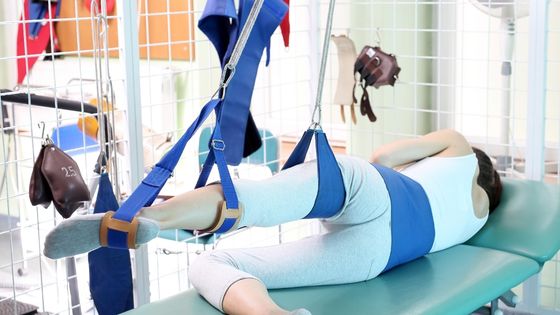When you have a stroke, one of the areas of your body that is most affected is your lower limbs. This can make it difficult to walk and do other activities. However, you can do exercises to help strengthen your lower limbs. Here are five exercises you can try:


1. Foot Drop Exercises
Foot drop is a condition that affects the ability to move the foot and ankle. This problem can result from various medical conditions, such as stroke, many sclerosis, cerebral palsy, or traumatic injury. Exercises are important for people affected by foot drop to help improve strength and mobility in the lower limbs.
Foot drop exercises involve standing on one leg, walking with a heel raise, and ankle pumps that strengthen the muscles in the feet and ankles. These exercises help strengthen the lower limb muscles, improve balance and coordination, and increase the range of motion. It is important to practice these exercises regularly to ensure the best outcome for foot drop.
2. Resistance Band Exercises
Stroke patients can often experience weakness and immobility in their lower limbs. This can make it difficult for them to walk or even stand. Resistance band exercises are a great way for stroke patients to strengthen these muscles and improve their mobility.
Resistance band exercises involve using elastic bands to provide resistance against the movement of your muscles. This makes them an excellent choice for strengthening weak muscles. Stroke patients can do this from anywhere without equipment, making them a convenient option for people with limited mobility.
3. Seated Marching
Lower limb stroke patients can benefit from doing seated marching exercises. This is a simple exercise that helps to strengthen the lower limbs and improve blood circulation. You can do this exercise from anywhere without special equipment, and it is easy to learn. To do seat marching, sit in a comfortable chair and place both feet flat on the floor. Lift one leg at a time, engaging the thigh muscles as you extend it up and forward as far as possible while keeping your toes pointed down.
Utilizing the opposite leg, return to the starting position. For each leg, perform this exercise ten to fifteen times. You can do this exercise daily to help improve blood flow and strengthen the muscles in the legs. In addition, it can help improve balance and coordination as well.
4. Stationary Cycling
Cycling is a great way to improve lower limb strength and mobility, as it works for all leg muscle groups. Stationary cycling can be a great exercise for stroke patients, as it is low-impact and easy to modify to meet their needs. It can help to strengthen the lower legs, reduce stiffness and improve coordination. Additionally, it can help as a form of cardiovascular exercise, providing an effective way to burn calories while helping patients reach their fitness goals.
Stationary cycling is ideal for stroke patients because it offers them a safe and comfortable environment to work out at their own pace. It is important to follow a doctor’s instructions and use appropriate resistance levels to reduce the risk of injury. As with any exercise program, stroke patients should always warm up and cool down before and after each workout session. With regular practice, stationary cycling can be an excellent way for stroke patients to improve their overall strength, mobility, and cardiovascular health.
5. Hip Adductions
Stroke patients often experience weakness or stiffness in these areas, making walking or performing other activities difficult. Hip adductions can help to improve strength and mobility, making it easier for patients to get around. They are also a good way to increase cardiovascular fitness and burn calories.
You will need an exercise band or tubing to perform hip adductions correctly. Anchor the band around a sturdy object and stand with your feet shoulder-width apart. Hold one end of the band in each hand and slowly draw your legs inward until your thighs parallel each other. Before returning to the starting position, take a brief pause. Repeat this motion 10-15 times, depending on your ability level. Make sure to maintain good posture throughout the exercise and avoid arching your back.
Finally, it is important to remember that stroke patients should always get supervised while exercising to ensure their safety. Additionally, they should not overexert themselves, as this can lead to further injury or complications. With the proper guidance and support from healthcare professionals, the above exercises can be a great way for stroke patients to rehabilitate and increase their mobility.






















